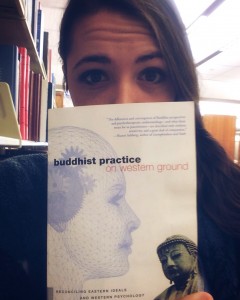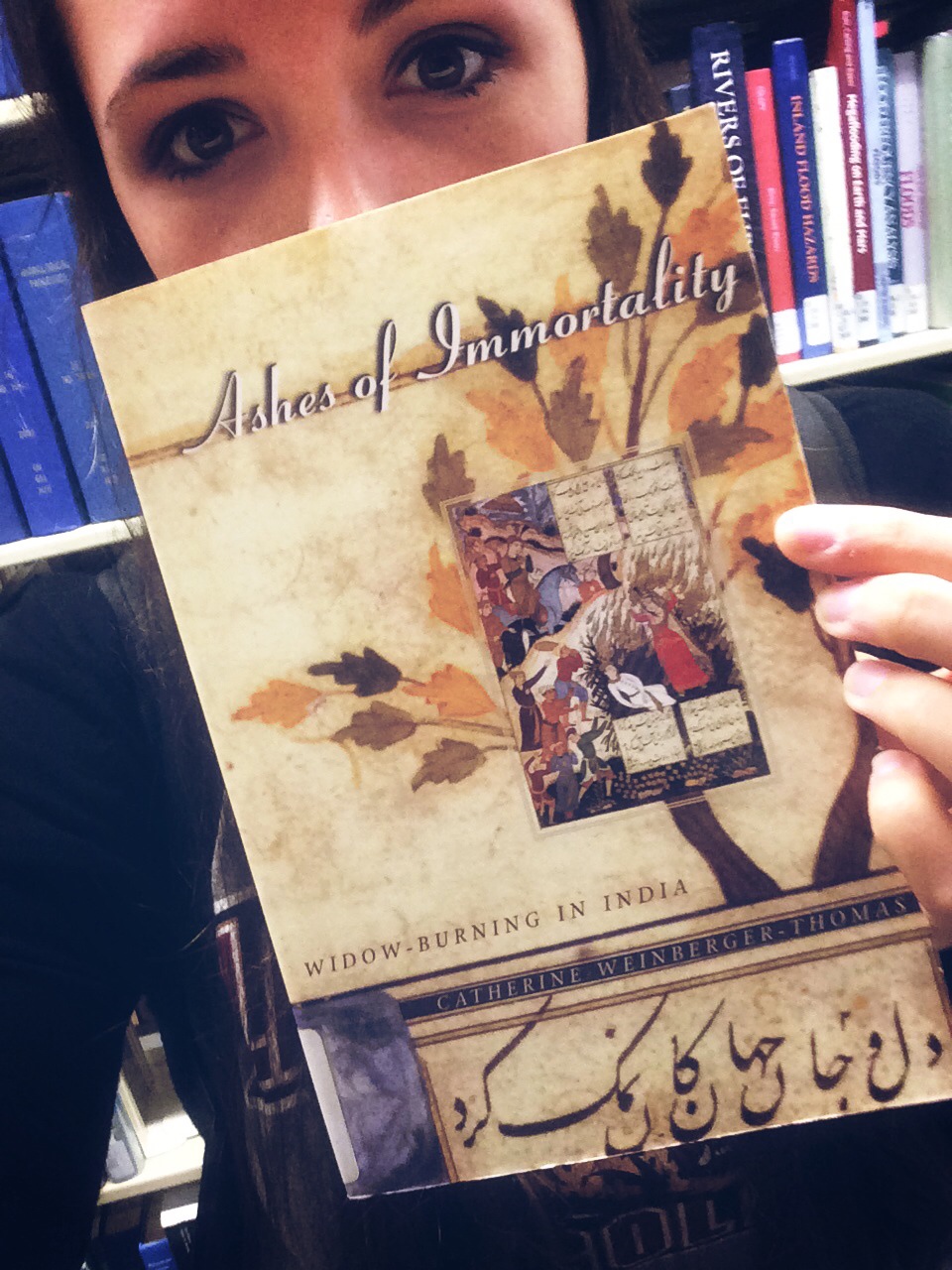Aronson, Harvey B. Buddhist Practice on Western Ground: Reconciling Eastern Ideals and Western Psychology. Boston: Shambhala, 2004. Print.
Two major aspects of Buddhism that intrigued me were The Tibetan Book of the Dead and Psychotherapy. The first search I did on the library OneSearch catalog was for “the Tibetan Book of the Dead”. I quickly wrote down the call number for the book: The Tibetan Book of the Dead by Donald S. Lopez Jr. who is also the author of the Religions of India in Practice book we use in class. The second search I did was for “Buddhism psychotherapy”. A few of the results had key words like Zen, the self, and mindfulness, which all would be helpful, but I was drawn to a title “Buddhism and Psychotherapy Across Cultures”. It just so happens that this text was right next to the Book of the Dead text. I looked at both, but decided that I was more interested in how Buddhism has changed and adapted in America.
When checking the shelves, it is important to look at all the neighboring books. I found “Buddhist Practice on Western Ground” by Harvey B. Aronson, Ph.D. which seemed very promising. The back explained that the book discussed the differences between Asian and Western cultural and spiritual values, which I began to write my paper on. He makes notes on the conflicts experienced by practitioners of psychotherapy when they look to the Buddhism traditions for guidance.
When first looking at the contents, I noticed there are 15 chapters addressing issues of spirituality, ego, anger, love, and nonattachment. I was drawn in by the chapters: “The Joys and Perils of Individuality”, “Ego, Ego on the Wall: What is Ego After All?”, “Anger: Abandon It or Express It?” and “Making Nonattachment Real”. By looking at these I knew I could gather information on many of the terms we discussed in class. There is also sections comparing these ideas of Buddhism in the traditional sense and in the modern western culture. Helpful chapter would be: “Psychotherapy in the Context of Ongoing Buddhist Practice”, “Attachment East and West” and “Presence and Absence in Life and Practice”. Seeing these outlined comparisons made choosing this book very easy.
Another reason I chose this book was from reading the acknowledgements. In one paragraph, Aronson gives thanks to “Joshua Cutler and Diana Marks of the Tibetan Buddhist Learning Center in Washington, New Jersey” for allowing him to “publicly birth many of the ideas in this work at their center in 1995” and offering him support on many occasions. Aronson gives excellent insight to Buddhist practices for those interested in starting their spiritual journey and good analysis for those already acquainted. This book has proved helpful in the paper writing process so far as it addresses many issues of psychotherapy in the West.

